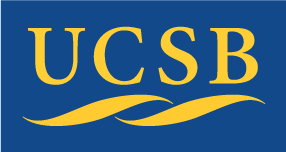|
Geometry, Topology, and Physics Seminar, Fall 2015
Part of the NSF/UCSB ‘Research Training Group’ in Topology and Geometry
Organizers:
Dave Morrison and
Zhenghan Wang.
Meets 4:00 - 5:30 p.m. Fridays in South Hall 6635.
Other Quarters: [
Fall, 2021;
Winter, 2020;
Fall, 2019;
Spring, 2018;
Winter, 2018;
Fall, 2017;
Spring, 2017;
Wnter, 2017;
Fall, 2016;
Spring, 2016;
Winter, 2016;
Fall, 2015;
Spring, 2015;
Winter, 2014;
Fall, 2013;
Fall, 2012;
Fall, 2011;
Winter, 2011;
Spring, 2010;
Winter, 2010;
Fall, 2009;
Spring, 2009;
Winter, 2009;
Fall, 2008;
Spring, 2008;
Winter, 2008;
Fall, 2007;
Spring, 2007;
Winter, 2007;
Fall, 2006
]
| Oct. 2 |
David R. Morrison (UCSB)
Abstract:
Conformal field theories in dimensions above four are rather exotic
objects, and it is only with the help of string theory (and its cousins)
that examples were constructed starting in the 1990's. All known
examples are supersymmetric.
In the past two years, there has been rather dramatic progress in
classifying these theories in six dimensions (with minimal supersymmetry).
The classification results at present concern a class of these theories
whose construction and properties involve the algebraic geometry
of elliptic fibrations. (Many of the intermediate results can be
expressed purely in terms of quantum field theory, but some key steps
require the assumption of an algebo-geometric construction.)
I will introduce this subject to both mathematicians and physicists
in this lecture. I hope to give some followup lectures with additional
details later in the quarter (or in future quarters).
Audio [ mp3, m4a ]; Lecture notes.
|
| Oct. 30 |
Travis Maxfield (University of Chicago)
Abstract:
Studying a quantum field theory involves a choice of space-time manifold and a choice of background for any global symmetries of the theory. We argue that many more choices are possible when specifying the background. In the context of branes in string theory, the additional data corresponds to a choice of supergravity tensor fluxes. We propose the existence of a landscape of field theory backgrounds, characterized by the space-time metric, global symmetry background and a choice of tensor fluxes. As evidence for this landscape, we study the supersymmetric six-dimensional (2, 0) theory compactified to two dimensions. Different choices of metric and flux give rise to distinct two-dimensional theories, which can preserve differing amounts of supersymmetry.
Audio [ mp3, m4a ]; Slides.
|
| Nov. 6 |
Washington Taylor (MIT)
Abstract:
Recent work motivated by physics has led to progress in understanding elliptic Calabi-Yau threefolds and fourfolds, using new mathematical and computational tools for analyzing the geometry of the bases that support such fibrations. This talk will give a tour of some of the highlights of this research program, including a systematic approach to enumerating elliptic Calabi-Yau threefolds with large h21, a Monte Carlo study of ~1050 distinct threefold bases that support elliptic Calabi-Yau fourfolds, and applications to physics including hints at how the observed standard model of particle physics may emerge from "typical" features of Calabi-Yau fourfolds.
Audio [ mp3]; Lecture notes.
|
| Nov. 13 |
Eric Rowell (Texas A&M)
Abstract:
The Yang-Baxter equation (YBE) has well-known connections to statistical mechanics, braid group representations and knot theory. More recently solutions to the YBE have found applications in quantum information both as an entangling resource and through explicit localizations of topological quantum gates. Inspired by the notion of entanglement Ge, Wu, Zhang and I introduced a family of generalizations of the Yang-Baxter equation which admits solutions of sizes n^k (where k=2 corresponds to the standard YBE). I will describe some of the applications and connections that have been found since.
|
| Nov. 20 |
Peter Koroteev (Perimeter Institute)
Abstract:
We study the connection between periodic finite-difference Intermediate Long Wave ($\Delta$ILW) hydrodynamical systems and integrable many-body models of Calogero and Ruijsenaars-type. The former describe quantum cohomology and quantum K-theory of the ADHM moduli space of Abelian instantons, while the latter arise in the the instanton counting in four and five dimensional supersymmetric gauge theories with eight supercharges in the presence of defects. Using string theory dualities we provide correspondences between hydrodynamical and many-body integrable systems. In particular, we match the energy spectra on both sides.
Audio [ mp3, m4a ]; Slides.
|
|
|



